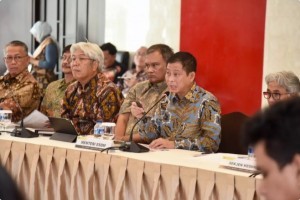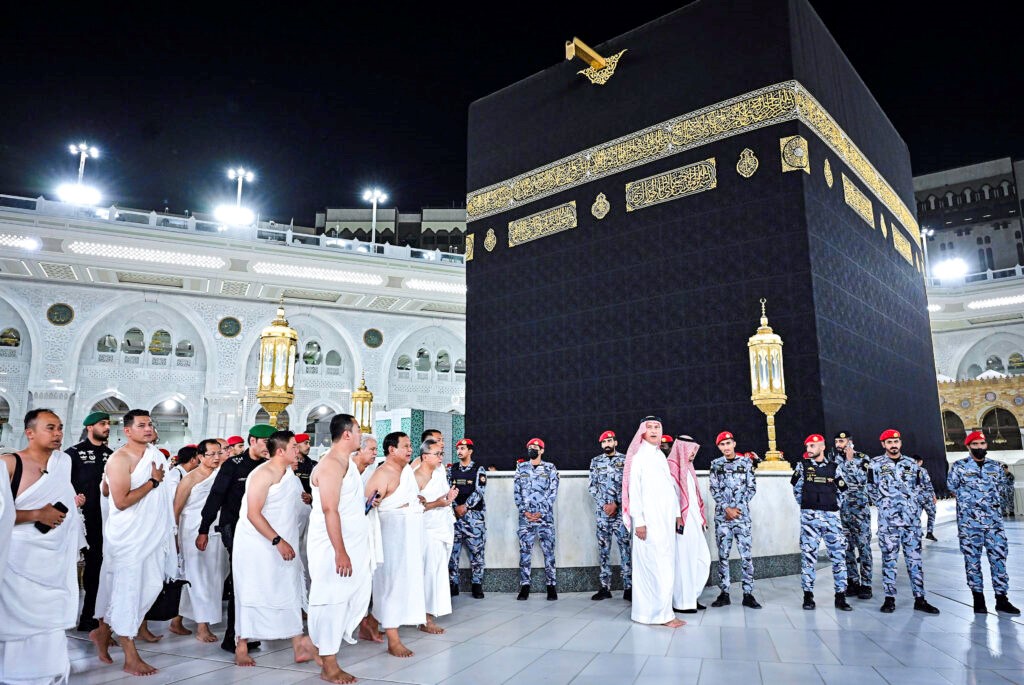Energy Minister: Higher Crude Price Boosts Investment

Minister of Energy and Mineral Recourses Ignasius Jonan holds a press conference in Jakarta, Friday (4/1). Photo by: PR of Ministry of Energy and Mineral Recourses.
The dynamics of the global economy in 2018, particularly rising oil prices, have become a windfall for investment in Energy and Mineral Recourses sector.
Minister of Energy and Mineral Recourses Ignasius Jonan on Friday (4/1) said that the value of Energy and Mineral Recourses investment last year was US$ 32.2 billion, almost the same as the value in 2015 and was higher from that of 2017 with US$ 27.5 billion.
Jonan also said that the higher investment was supported by the increase of Indonesian Crude Oil (ICP) from the beginning of January to October 2018. In October 2018, the ICP price reached US$ 77.5 per barrel before decreased to US$ 62.9 per barrel in the following month. This condition also affected investment in oil and gas sector in 2018 with a value of US$ 12.5 billion, followed by mining (US$11.3 billion), electricity (USS 6.8 billion) and renewable energy (USD 1.6 billion), he said.
Jonan went on to say that the Government has implemented appropriate policy mitigation so that the global economic turmoil that suppresses world oil prices does not affect people’s purchasing power. The Government is also committed to ensuring that electricity tariff and fuel price affordable until the end of 2019.
“What is important is that the Government is committed to maintain the electricity tariff, which is evaluated every three months. We hope that until the end of the year there will be no change in the tariff. In addition, as of today the Government does not see any reasons for increasing price of premium or gasoline 88, and C48 gasoil,” Jonan said.
Jonan also said that the investment target in Energy and Mineral Resources sector in 2019 is set at US$ 33.34 billion, lower than that of 2018 with US$ 37.2 billion, considering the pressure of world oil prices in the past two months, due to abundance of world crude oil production.
For the record, the average OPEC crude oil production in November 2018 increased by 100,000 barrels per day compared to that of previous month and the Non-OPEC crude oil supply projection in the fourth quarter of 2018 reached 61.2 million barrels per day, higher than the projection of the previous month.
The oil price is also affected by market worries over weakening global economy due to escalation of trade wars between the United States (US) and China, as well as Brexit uncertainty that could weigh on the European economy.
For Asia Pacific region, the decline in crude oil prices is influenced by the following factors:
- The weakening of Chinese economy, indicated by weak retail sales growth and weak industrial output growth.
- Weak demand for direct-burning crude oil from Japan due to the use of alternative fuels and warmer weather conditions than the previous year.
The aforementioned factors made ICP reached US$ 54.81 per barrel in December 2018, US$ 8.17 lower from US$ 62.98 per barrel in November 2018, while the ICP Sumatran Light Crude (SLC) average in December 2018 reached US$ 55.63 per barrel, a US$ 8.30 decrease from US$ 63.93 per barrel in the previous month.
The changes of average crude oil prices on international market in December 2018 compared to that of November 2018 are as follows:
Dated Brent decreased from US$ 64.74 per barrel to US$ 57.39 per barrel, WTI (Nymex) from US$ 56.69 per barrel to US$ 48.98 per barrel, OPEC basket from US$ 65.33 per barrel to US$ 58.45 per barrel and Brent (ICE) from US$ 65.95 per barrel to US$ 57.67 per barrel. (Tim Komunikasi ESDM)
Translated by: Ridwan Ibadurrohman
Edited by: Mia Medyana








